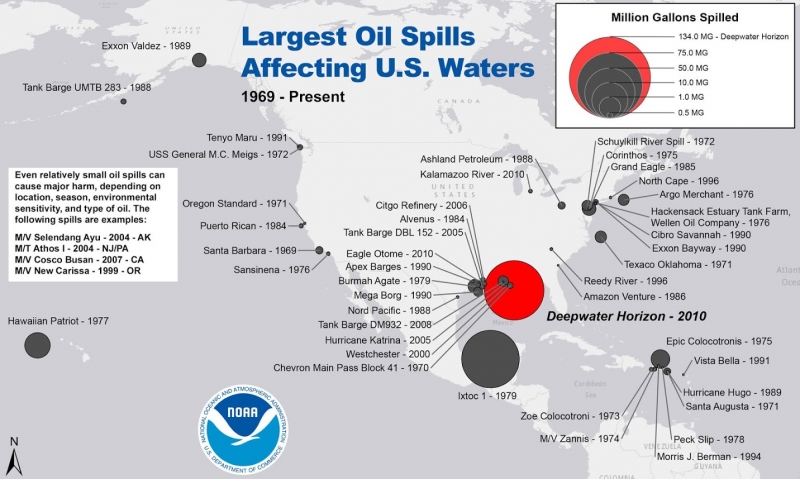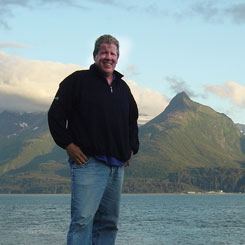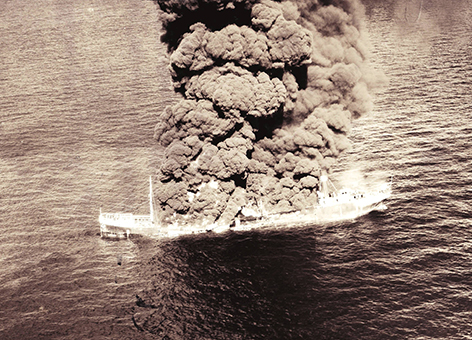This week, during National Preparedness Month, OR&R is taking a closer look at some of the disaster response roles our office and its partners serve in being prepared for both natural and human-caused disasters. In today’s blog, get an inside look at how NOAA’s scientific support coordinators prepare for action.

Catastrophic events like Hurricane Katrina, the 2011 Japan Tsunami, and the Deepwater Horizon or Exxon Valdez oil spills come to mind as examples of natural and man-made disasters. These kinds of disastrous events are infrequent, but we plan for catastrophes knowing that preparing for the big events will also help us be ready for more routine events.

As an emergency responder people sometimes wonder what I do between spills, and they are surprised when I tell them that thousands of oil and chemical spills occur every year in U.S. waters. Planning and responding to those keeps me plenty busy. Most of these spills are thankfully small and rarely make the news, but even small spills, such as a diesel spill from a fishing vessel sinking in a harbor, can be a threat to marine life and a process to clean up.
To address these incidents, both large and small, NOAA has a team of scientific support coordinators (SSCs). I supervise the Western team, which covers Alaska, Hawaii and Oceania, Washington, Oregon, California, and also the Great Lakes and Texas. The SSC’s role is to provide scientific support to the U.S. Coast Guard officers in charge of response operations. This may require going on scene for an afternoon for a small incident, or deploying for months at a big spill. Each SSC covers a region of the U.S., and we may be called to respond anywhere, including international spills, so there is a lot of coordination.
Between incidents, the SSCs focus on preparedness activities, such as attending area committee and regional response team meetings, and reviewing response plans. There are layers of plans — from national, regional, and local plans, to facility and vessel plans. These are comprehensive documents that get reviewed, updated, and tested annually. For example the Northwest Area Contingency Plan that covers Washington, Oregon, and Idaho, is over 1,300 pages long and is the master plan for oil spill and hazardous substance responses in the region.
There are also more specific localized plans. For example, in the Seattle area we have response plans for disasters in our waterways and harbors along the Puget Sound. The SSCs also work with our support team in Seattle to test and improve spill response software and mapping tools, standard techniques and guidelines for observing oil, assessing shoreline impact, and evaluating cleanup and recovery technologies.
A typical day for an SSC is often routine office work. My team reviews local and area contingency plans, conducts trainings, attends emergency response exercises, goes to meetings with the U.S. Coast Guard, other federal and state agencies, and Native American tribes. They may also conduct field work to visit cleanup sites post-response. This time of year, we track all tropical storms closely and begin make staffing plans well before the storms even get named.

A few of our responses are planned in advance. NOAA has a partnership with the Coast Guard to address historic shipwrecks, including WWII wrecks that dot the coast — some of which still contain oil.
But most spills, by their nature, are unplanned events. Every SSC has a couple bags packed, ready to drive or fly at a moment's notice if a call comes in. There have been days when I came to work expecting to spend the day working on a report or contract issue, and then end up dropping everything to head to the airport and oil spill command post. But those are also the events we train for, and we know the reports and contracts will be there when we get home.
Every spill response is different, but we typically work to bring NOAA science to help explain the chemistry and fate of the oil, forecast and track the oil movement, identify and prioritize sensitive species and habitats, conduct systematic shoreline surveys, and advise on cleanup tactics.
A day in the life of an SSC ranges from a day at my desk, to a day on the deck of a ship. We are constantly improving our plans, learning from past challenges, and preparing for the next disaster. Personally, I am always prepared to deploy at the drop of a hat. What I like best is seeing the progress of an incident, and the role of science — from the initial notification at 2 a.m., to the resolution of the natural resource damage claims and restoration that may take several years or longer. I am proud of the work that NOAA does. Every spill is a learning opportunity and those lessons feed back to better preparedness for future incidents.
